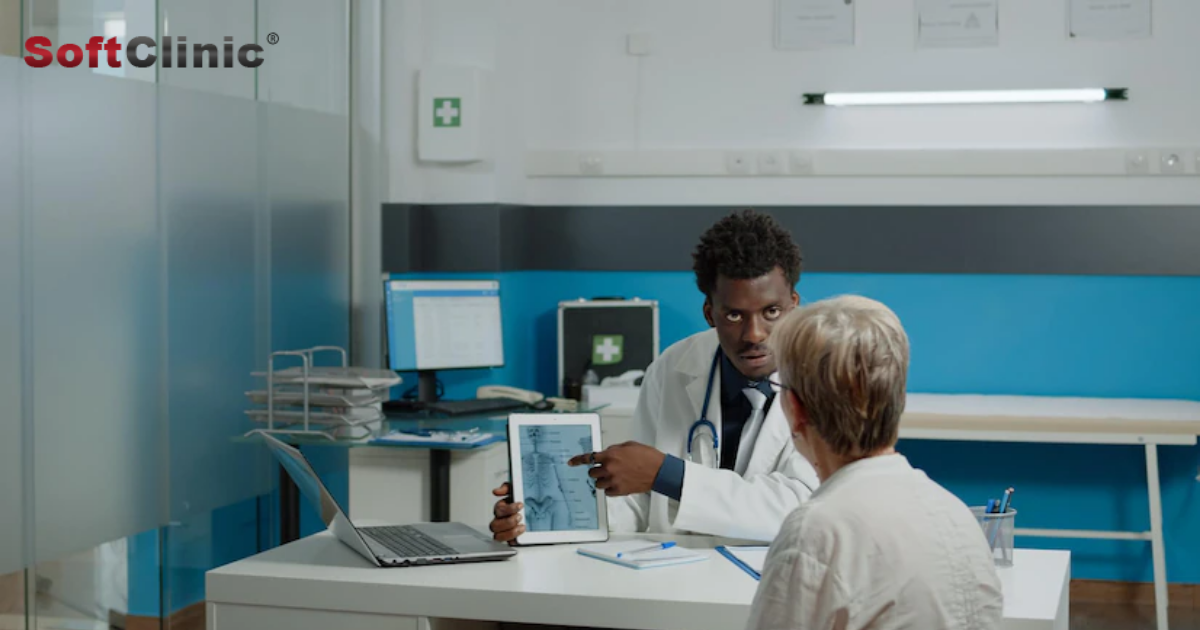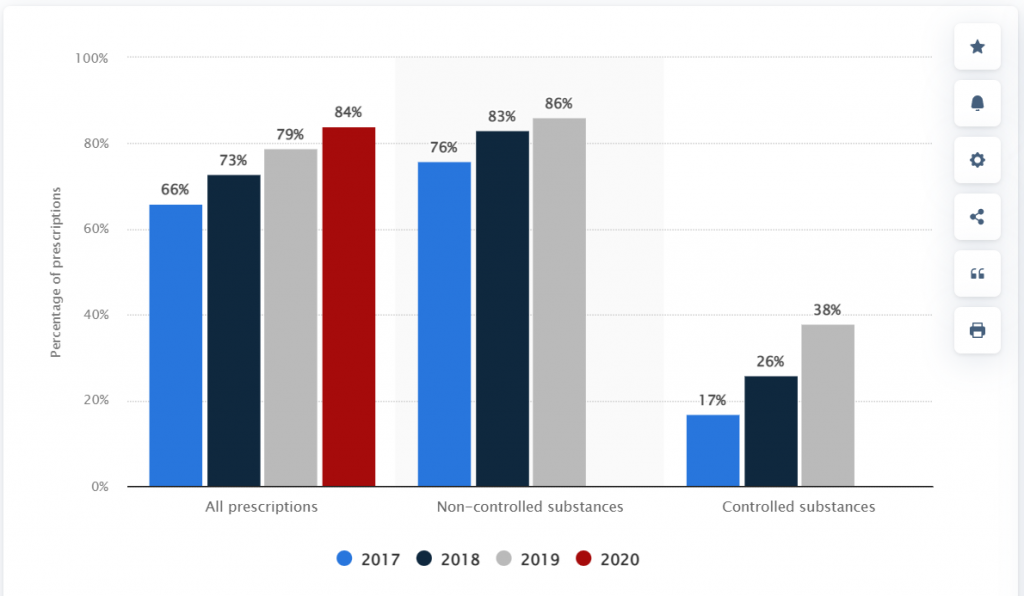8 Critical Reasons Why Hospitals & Clinics Need Digital Prescriptions
May 26, 2022The days when patients and doctors relied on loose paper prescriptions for critical medical information are slowly disappearing.
E-prescribing is one of the latest Healthcare IT Trends that is finally catching up with the rapid digitization taking place in the healthcare industry.
In the United States, the use of digital prescriptions is up from 66% in 2017 to about 84% in 2020 as per reports from Statista.
Source – Statista
The trend is changing the face of healthcare, removing many obstacles for the patient, doctor, and pharmacist ecosystem. Prescriptions are more accurate, can be easily accessed, and are data-backed. Despite several upsides, there are thousands of clinicians and care centers that still go for the traditional paper prescriptions.
It’s unfortunate to report that poorly written manual prescriptions are one of the many contributors to medication errors that claim about 7000 lives each year in the US. Moreover, as NCBI reports, the total cost of dealing with medication errors can elevate to $40 billion annually.
Unlike earlier, the process of adopting digital prescriptions has become quite streamlined. With the help of leading and best hospital management software, physicians can start writing digital prescriptions within a few days, and not weeks.
To elucidate how digital prescriptions can transform the medical practice for a clinic, hospital, or care center, we have made a list of major benefits of e-prescriptions. Let’s get started!
- Alerts for Allergies and Conflicting Medications
Clinicians have access to the patient’s previous medical records as they prescribe new medication to them. This allows them to quickly review if they have a history of allergies or alerts for conflicting medicines that must be avoided for their case.
The digital prescription system can also alert the doctors about pre-existing conditions such as potential drug interactions or adverse results for a certain prescription drug.
This saves the patients from getting improper medication.
- Eradicating Drug Prescription Errors
Many times similar sounding drugs can cause confusion among the pharmacists, leading to patients receiving inaccurate drugs.
For instance, Advicor and Advair are two drugs with similar spellings but are used for two completely different conditions. Advicor is used for lowering cholesterol and fat in the blood, whereas Advair is used for treating asthma.
An asthma patient receiving blood cholesterol medication won’t do them any good and may end up worsening their condition.
With digital prescriptions, doctors can make sure they’re prescribing the right drug from a database of medicines while pharmacists can ensure they hand out the right drugs.
- Create Accurate Medical Reconciliation Lists
Past digital prescriptions can be easily accessed by physicians when they’re filling up orders for new medication. This allows them to quickly and accurately create reconciliation lists.
Patients can be sure that when they meet a new doctor or face a different condition, all their reconciliation histories are easily available. E-prescribing software centrally connects pharmacies and clinics with patient records across the nation.
- Track Prescription Fulfillment
One of the useful features of e-prescriptions is the ability to track fulfillment. This allows doctors to track how many times a certain drug was filled for the patient.
The information can potentially help doctors recognize addiction patterns and come up with better treatments for the patient. It also helps them identify when a certain medication is not working after repeated filling. All of this data can be integrated with their existing and best hospital management software.
- Prescription Management for the Patient
In contrast to handwritten paper prescriptions, their digital counterparts are not that easy to lose. Even if there is no written copy of the prescription, the digital ones are saved online in digital databases that are fault-proof.
At the same time, the pharmacies have access to prescriptions which removes the need for carrying paper notes. All of this makes it easy for the patient to manage their prescriptions.
- Prescribe Medications covered by Insurance
If the medication is not covered by the patient’s insurance provider, they might feel reluctant to actually purchase it. E-prescriptions can solve this problem by recommending generic medication that is most likely to be a part of the patient’s insurance coverage.
This is possible because the best HMS software used by physicians can identify which all medicines a specific insurance plan covers, making it easier and encouraging for patients to use their prescription plan.
- Reduce Adverse Drug Events (ADE)
There’s ardent proof that digitally prescribed medication is less prone to errors. There are no illegible handwritten remarks that might confuse the pharmacist or the patient while getting the medication.
Hence, it reduces the possibility of adverse drug events or ADEs that occur when patients consume unintended medicines.
- Monitor the Prescribing of Controlled Substances
Controlled substances are a class of drugs that follow strict guidelines as to when and how they must be prescribed to patients. With the help of digital prescription data, the state government and physicians alike can monitor the use of controlled substances for patients.
In a scenario where such substances are over-prescribed, timely intervention can be made, preventing the patient from dependence on these drugs. It’s one of the major concerns for medical authorities as many of these drugs are officially regulated.
SoftClinic Software for Digital Prescriptions
SoftClinic is a HIPAA-compliant company counted among the best hospital management software suites that offer several key features for hospitals and clinics. It has a dedicated OPD module that empowers doctors with digital prescription details for referring case histories and updating patient prescription information accurately.
SoftClinic is a game-changer in the Healthcare IT solutions industry with operations in more than 40 countries, offering transformational tools for healthcare service providers.
Key features include:
- Manage Prescription Histories
- View prescription details
- Update Prescription records
- Extended access for nurses and clinical staff
- Easy-to-use User Interface
- Fully digital workflow
- Import patient details for data portability
Conclusion
In the nutshell, we can say that opting for a digital system for prescription filling is one of the Healthcare Technology Trends that clinicians need to hop on to. Clinics and hospitals have access to affordable software products that can digitize their prescription workflow quickly and effectively. Moreover, the biggest beneficiary of digital prescriptions is the patient which is saved from several atrocities related to the outdated paper prescription mechanism.


0 Comments